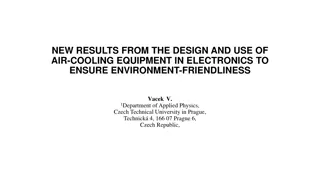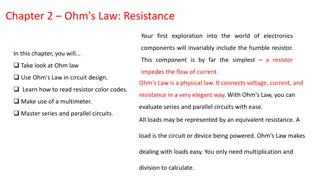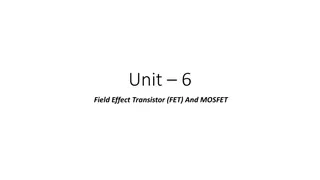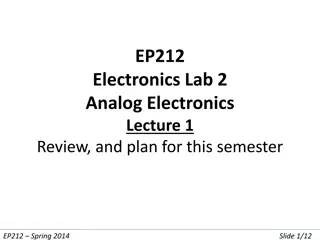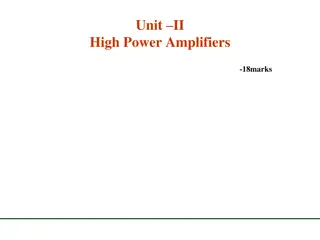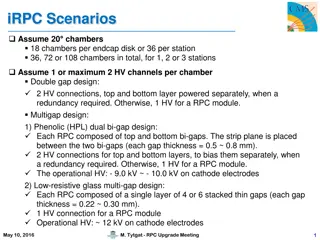Understanding the Differences and Characteristics of BJT and FET in Electronics
Learn about the disparities between Bipolar Junction Transistors (BJT) and Field-Effect Transistors (FET) in this informative content. Explore the construction, operation, and characteristics of these semiconductor devices, including N-channel JFET specifics, operating behaviors such as pinch-off, drain characteristics, and transfer characteristics. Enhance your knowledge of current-controlled versus voltage-controlled devices, and delve into the unique attributes of npn, pnp, JFET, and MOSFET transistors.
Download Presentation

Please find below an Image/Link to download the presentation.
The content on the website is provided AS IS for your information and personal use only. It may not be sold, licensed, or shared on other websites without obtaining consent from the author. Download presentation by click this link. If you encounter any issues during the download, it is possible that the publisher has removed the file from their server.
E N D
Presentation Transcript
By k. Sreevidya Asst .professor Dept of ECE
Difference between BJT & FET BJT FET Three terminal semiconductor device. Emitter, base, collector Current controlled device Bipolar device Two types- npn & pnp Three terminal semiconductor device Source, gate,drain Voltage controlled device Unipolar device Two types JFET & MOS FET
Construction of N-channel JFET Major part of the structure is n- type meterial. Top of the n-type channel Is connected through an ohmic contact to a terminal Reffered to as drain(D). As lower end Connected through an ohmic contact to a terminal Reffered as source (S). P-type meterials connected to gether and taken as terminal gate(G). JFET has two pn junctions under no bias condition.
JFET operating characteristics:VGS=0V Three things happen when Vgs=0v and Vds Is increased from 0v to more positive Voltage A depletion region between p-gate and N- channel increases as electrons from N-channel Combine with holes From p-gate. Increasing the depletion region decreasing the size of N-channel Which increases the resistance of the N-channel. Even through the N-channel resistance increasing the current (ID) from source to drain through the N-channel is increasing.This is because Vds is increasing.
JFET operating characteristics: pinch off If Vgs =0v and Vds is further increased to a more positive Voltage , that the depletion region gets increases and pinchoff the N- channel. This suggests that the current in N-channel (ID) would be dropped to SaturatIon.
JFET drain characteristics Plot between Vds Vs Id for different values of vgs. When Vgs=0v & Vds is positive ,Id increases linearly. When Vds is more positive Voltage id gets saturated as Idss. When Vgs=-ve ,& Vds positive Voltage Id current reduces from the previous value of Id.
JFET TRANSFER CHARACTERISTICS Plot between vgs and id for fixed value of vds When vgs = 0v id is idss and as vgs more negative ,the drain current Id reduces.


